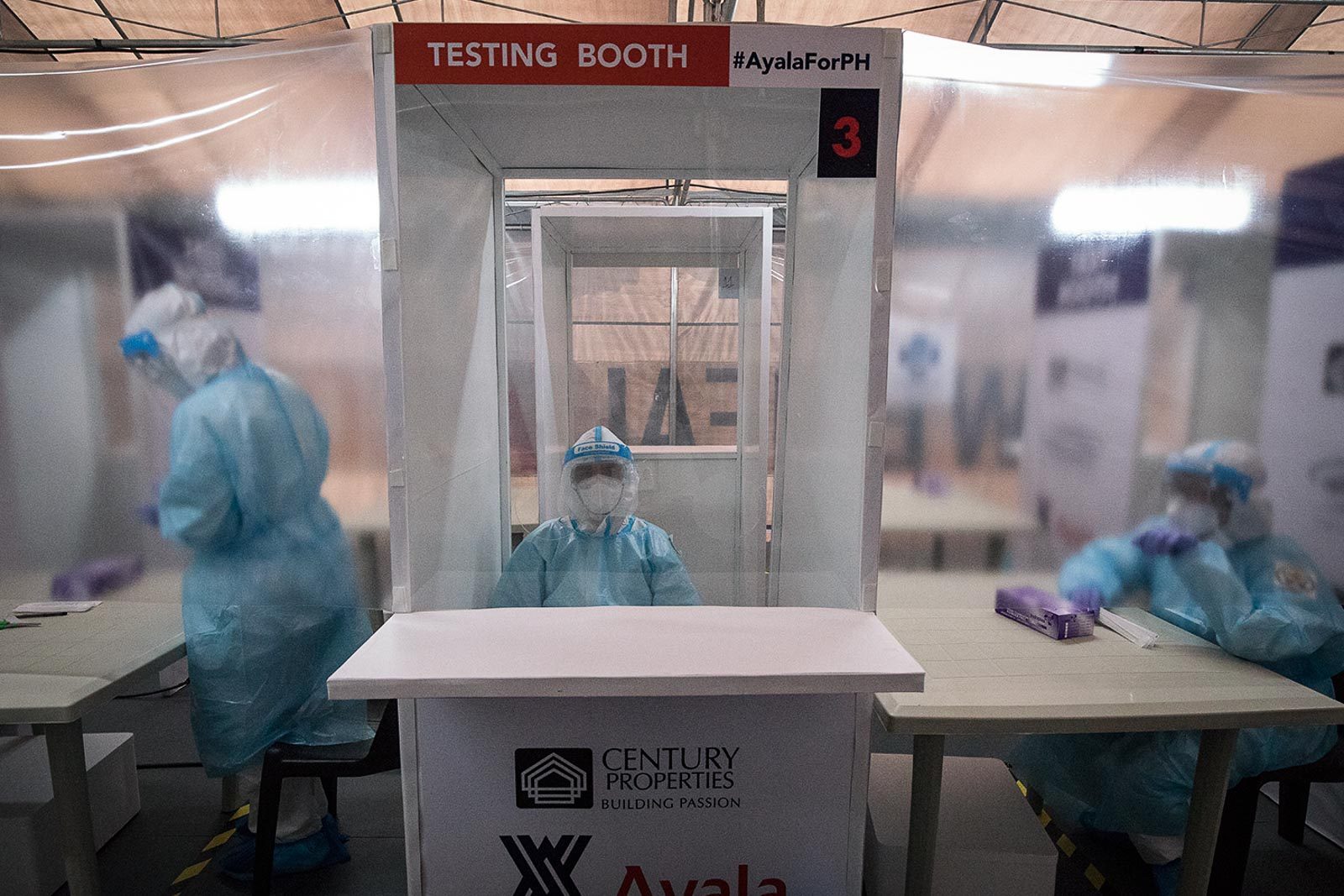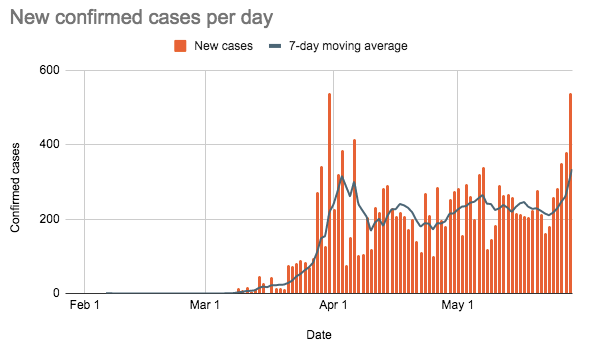SUMMARY
This is AI generated summarization, which may have errors. For context, always refer to the full article.

MANILA, Philippines – The Philippines reported 539 new coronavirus cases on Thursday, May 28, the highest number of new cases reported in a day during the pandemic.
The last time the number of new cases hit close to this number was on March 31 when 538 new cases were reported. This day is the day cited by most health experts as the beginning of the first surge in Philippine COVID-19 cases.

The additional cases brings the country’s number of confirmed cases to 15,588.
Of the 539 new cases, more than half or 61% were from Metro Manila while 10% were from Central Visayas. Repatriated Filipinos, including overseas Filipino workers, accounted for 10% of the cases. The rest are cases from elsewhere in the cpuntry.
There were also 17 new deaths from the disease, bringing the total death toll to 921.
Meanwhile, 92 more individuals recovered bringing the total recoveries to 3,598.
Due to backlog? The continued rise in new cases is due to the government’s improved capability to validate positive cases, said Health Undersecretary Maria Rosario Vergeire.
“This is because of the increase in cases we are able to validate because we have hired additional encoders,” she said on Wednesday.
Aside from reporting the confirmed COVID-19 cases, the DOH also keeps a tally of positive cases – individuals who got a positive result in a coronavirus lab test but whose result still needs validation by the department.
This tally is not included in the number of confirmed cases announced by the DOH everyday.
There was a backlog of some 7,000 cases as of May 24, according to a study by OCTA Research, a team of University of the Philippines experts and scientists.
But additional encoders means the government was able to lessen this backlog and add to the confirmed cases, even if these cases tested positive days or weeks ago.
Vergeire said 33 out of the 43 testing labs now have “zero backlog.” Meanwhile, the country now has 34 labs capable of processing reverse transcription polymerace chain reaction (RT-PCR) tests.
Healthcare capacity. The country’s healthcare system has not yet been overwhelmed by the pandemic.
Ward beds dedicated to coronavirus patients nationwide are only 36% occupied. The same goes for isolation beds. Intensive care unit beds are 34% occupied while only some 18% of ventilators are being used.
In total, the country has a bed capacity of 13,557 for COVID-19 patients.
Government mulls relaxing quarantine rules. The continued rise in cases comes on the day President Rodrigo Duterte is expected to announce new quarantine rules to be enforced starting June 1.
Officials leading the government’s pandemic response have recommended to him the downgrading of quarantine measures in Metro Manila, the country’s economic hub hard hit by the virus.
From modified enhanced community quarantine (MECQ), the task force said Metro Manila can go under the more relaxed general community quarantine (GCQ). Metro Manila mayors made the same recommendation, citing the need to reopen their economies and bring back livelihood of citizens.
Yet a group of University of the Philippines experts and scientists said data from the DOH shows it may be “premature” to ease quarantine measures.
While some cities, like Mandaluyong, Marikina, Pasig, Quezon City, and San Juan, saw a decline in cases the past week, there were significant increase in cases in Makati, Las Piñas, and Pasay.
Metro Manila had an average of 5 new cases per day per million of population which led the group to classify the megacity as “high risk.”
Meanwhile, the government says it has achieved a 32,000 testing capacity, surpassing its target of 30,000 testing capacity by end of May. However, this is far from the actual number of tests done per day, which have hovered in the 5,000 to 11,000 range in preceding days.
Aside from Metro Manila, areas under MECQ until May 31 are Bataan, Bulacan, Nueva Ecija, Pampanga, Zambales, Angeles City, and Laguna.
Cebu City and Mandaue City are under the stricter ECQ until the same date. – Rappler.com
Add a comment
How does this make you feel?
There are no comments yet. Add your comment to start the conversation.